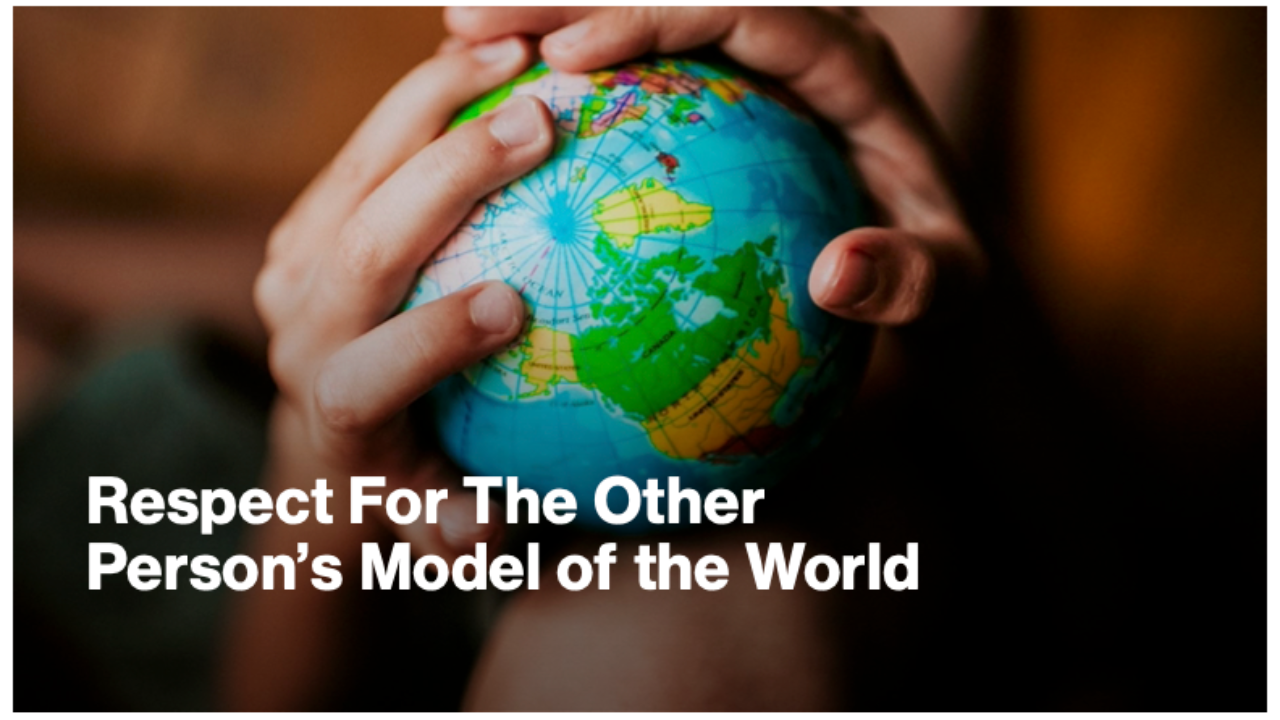Respect for the Other Person's Model of the World

Today, I’m going to talk about…
Respect for the Other Person’s Model of the World
(The First NLP Presupposition)
In NLP, presuppositions are known as “convenient assumptions”—not because they are inherently true, but because they help us adopt a mindset that leads to better communication, coaching, and relationship results.
Today, we explore the first (of 14) NLP presuppositions:
“Respect for the Other Person’s Model of the World.”
Here’s Why It Matters:
Everyone sees the world differently. People’s experiences, beliefs, values, and cultural influences shape their reality.
When we respect someone’s model of the world, we acknowledge that their perspective is valid for them—even if we disagree with it.
This doesn’t mean we accept, agree with, or leave it unchanged. It simply means that before we influence, guide, or challenge a belief, we must first respect its existence.
By adopting this mindset, we:
- Communicate with more empathy and understanding
- Build trust and deeper relationships
- Open the door for real change instead of resistance
Here’s Where Most People Go Wrong:
- They judge or dismiss another person’s perspective without understanding it.
- They try to change someone’s mind before meeting them where they are.
- They assume their own worldview is the "right" one, creating disconnection.
The problem? When people feel unheard or invalidated, they shut down.
If we don’t first respect where someone comes from, they won’t be open to listening, learning, or growing.
If You Don’t Fix This, You Risk:
- Miscommunication—leading to frustration and disconnect.
- Resistance to change—people hold onto beliefs more tightly when they feel attacked.
- Damaged relationships—lack of respect erodes trust.
Respecting someone's worldview is the first step to influencing, connecting, and having meaningful conversations, whether coaching, leading, or engaging in daily interactions.
Here’s What You Should Do Instead…
Rather than dismissing someone’s beliefs outright, seek to understand before you challenge them.
Here are 5 ways to apply this NLP presupposition:
5 Ways to Respect the Other Person’s Model of the World
Way #1: Listen Without Interrupting
Instead of mentally preparing your response while someone is talking, truly listen. Ask yourself:
“What is shaping their perspective?”
Way #2: Stay Curious, Not Judgmental
Instead of reacting with “That’s wrong,” shift to curiosity:
- “How did you come to see it that way?”
- “What experiences shaped this belief?”
A curious mindset fosters trust and openness.
Way #3: Acknowledge Their Perspective Before Offering Yours
Before sharing your viewpoint, acknowledge theirs:
- “I see how that makes sense from your perspective.”
- “That’s an interesting way to look at it.”
This helps people feel heard and valued.
Way #4: Remember—Respect Doesn’t Mean Agreement
Respecting someone’s model of the world doesn’t mean you agree with it.
It simply means you understand that it’s fundamental for them and approach it patiently.
Way #5: Meet People Where They Are
To create change, we must start within the other person’s world, not from our own.
- Influence happens from understanding, not force.
- Growth happens through connection, not conflict.
Here’s an Easy Step You Can Take Today to Get Started:
The next time you find yourself in a disagreement or conversation where you feel resistance, pause and ask: “What is their model of the world, and how can I respect it before responding?”
You may be surprised at how quickly this small shift deepens your connections and improves communication.
Stay connected with news and updates!
Join our mailing list to receive the latest news and updates from our team. Your information will not be shared.

